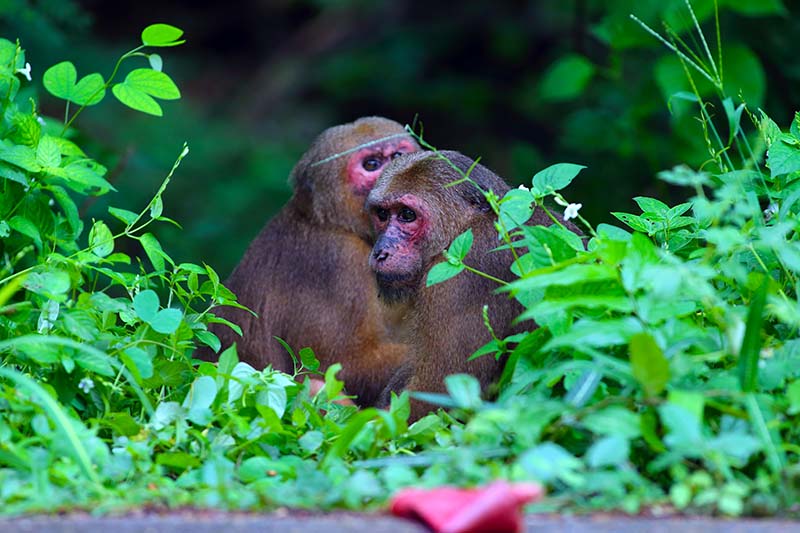
2.0-minute read to distract yourself while distancing
We’re guessing you haven’t spent any time recently (or perhaps ever) thinking about the facial features of endangered red pandas (Ailurus fulgens). But if you’re up for a time-in programming break, here’s a quick creature feature challenge to test your visual acuity. Look closely—can you tell the difference between the panda on the left and the one on the right? Do you think you could pick these two out of a line-up of identical-looking, gingery, bamboo eaters? They may appear alike, but the differences lie in their fine facial details. Even amongst experts, without obvious distinguishing markings to tell one red panda from another, monitoring their dwindling populations has posed a significant challenge. However, new developments in face recognition technology are making the gathering of conservation-critical information on animal species with subtle variations in appearance a whole lot easier.
Until recently, researchers had resorted to micro-chipping and collaring to identify and track at-risk species; now, computer vision tech upgrades are helping to eliminate the stress and risk of capturing and tagging threatened wildlife.
Working in close collaboration with biologists, computer scientists are creating AI-assisted facial recognition programs that map and record granular visual characteristics of individual animals. In much the same way facial recognition software works for humans, Automatic Individual Identification Methods used for wildlife first process and reorient the photographic images so that they are as close in size and shape to one another as possible. Then, distinguishing features such as eye size, fur texture, or whisker spots are isolated and identified for comparison to a database of existing images, greatly expanding researchers’ ability to pinpoint new individuals and track populations.
According to the IUCN, the number of red pandas in the world has decreased by 40% in the past 50 years. As a result of habitat loss and hunting, there are now only 16,000 to 20,000 left in the highland pine forests of Nepal, India, Myanmar, Bhutan, and China. Because every creature counts, for wildlife threatened with extinction like the red panda, innovations in machine learning are becoming increasingly important to monitoring their demographics, health, and response to environmental change. These transformative technologies also hold great potential for expanding the community of citizen conservationists by enabling the public to help track endangered species through online contributions to image database portals.
You can learn more about red panda particulars here and other animal facial recognition projects like LemurFaceID here, and Lion Identification Network of Collaborators here.
We hope you are hanging right on in there, but if the news updates start to feel overwhelming, here’s an NYC semi-pro tip to lighten up your headspace: even if your only view of the outdoors is through a window, remember to turn your face towards the sun and just breathe.
And, today is National Doctor’s Day! For all of the healthcare professionals on the front lines working around the clock to save lives, including the 79,000 medical volunteers in New York, here’s today’s uplifting open-window whoop of extreme gratitude from Manhattan’s Upper West Side. Replay as needed!
As always, take good care and be well.




































































